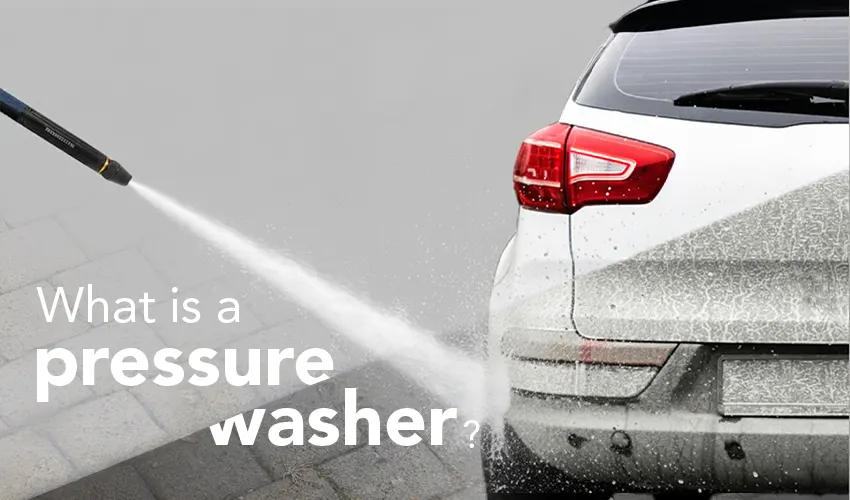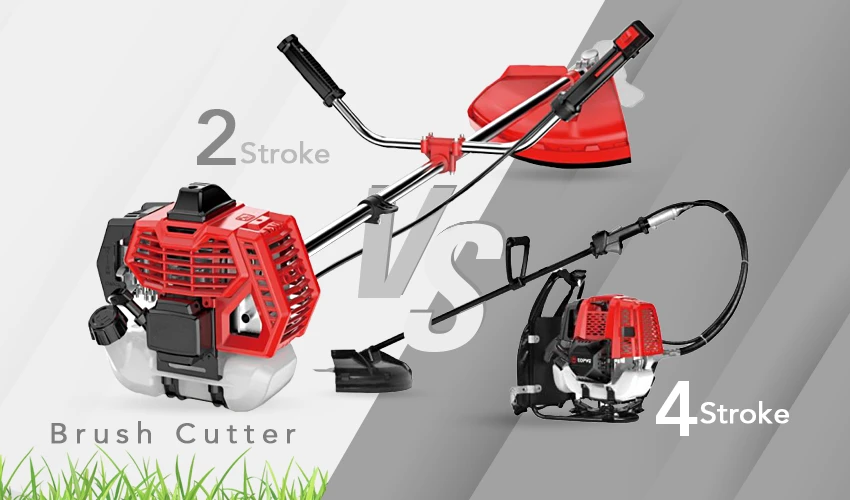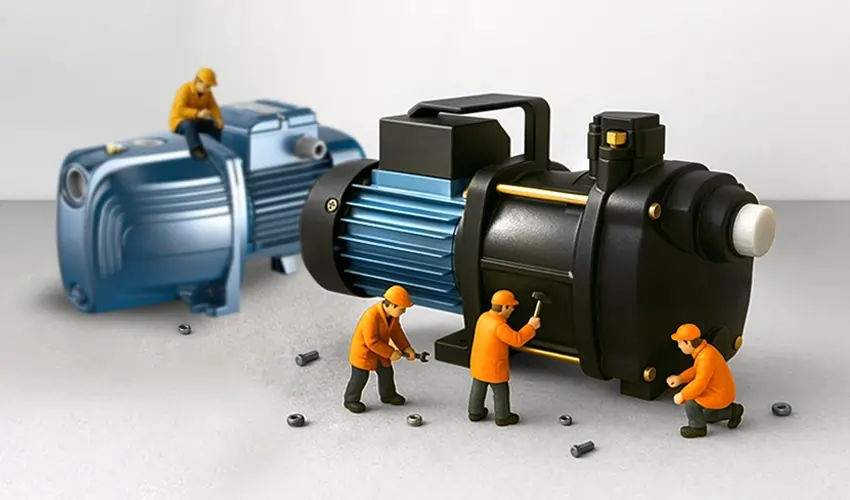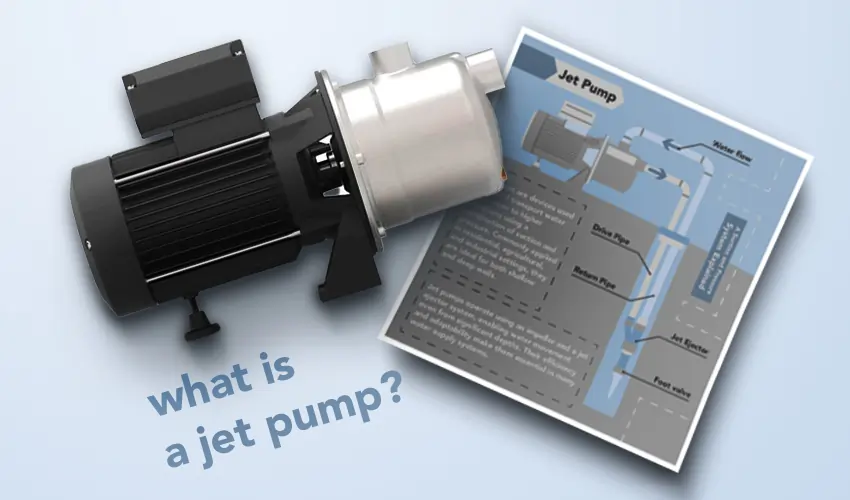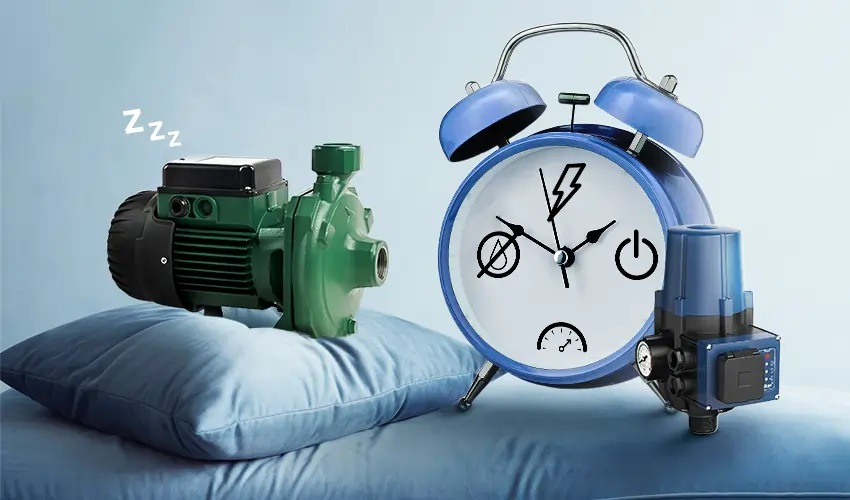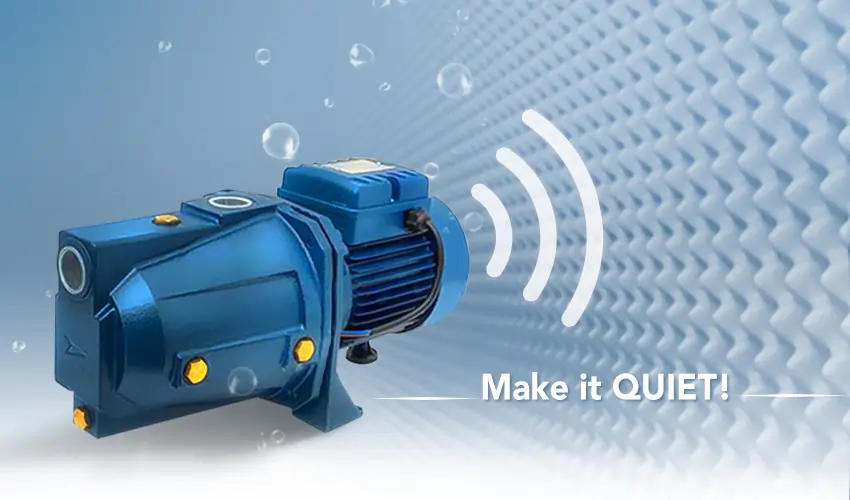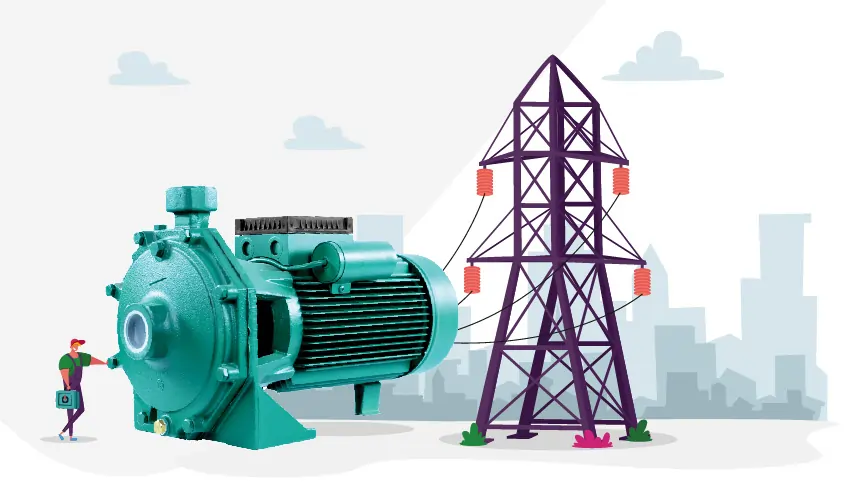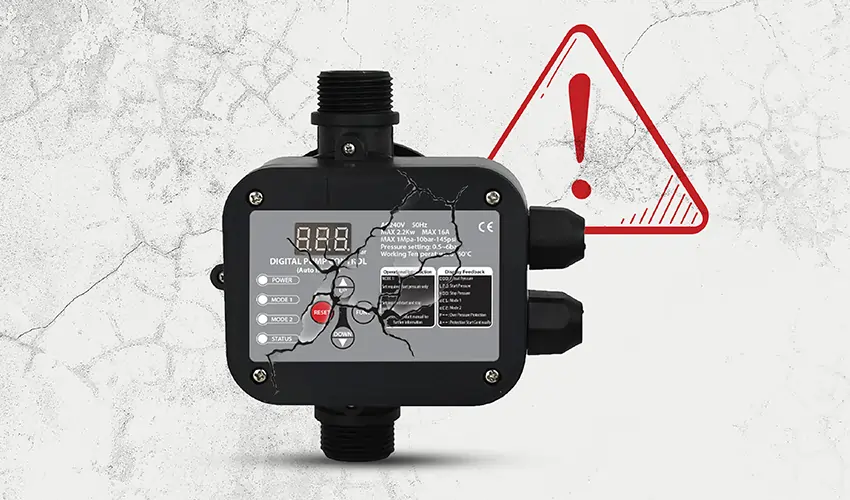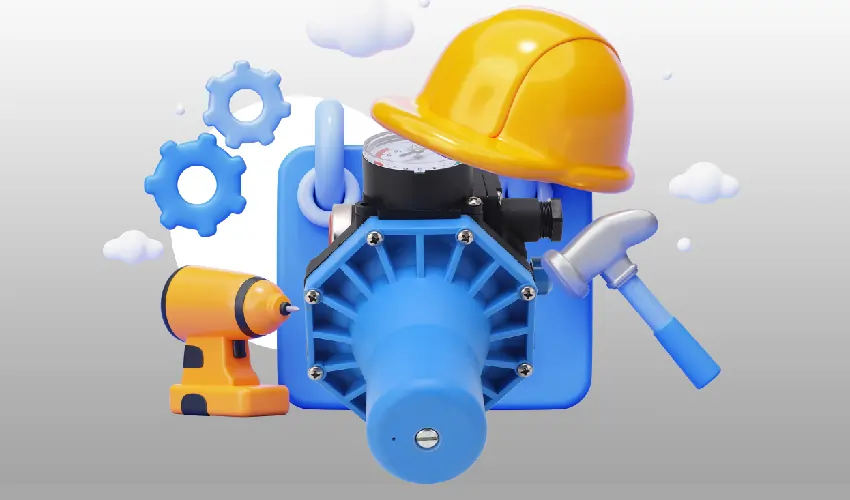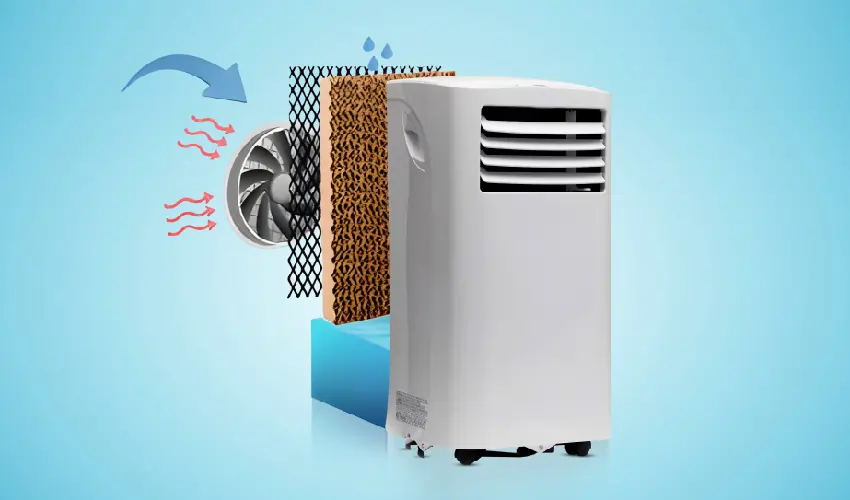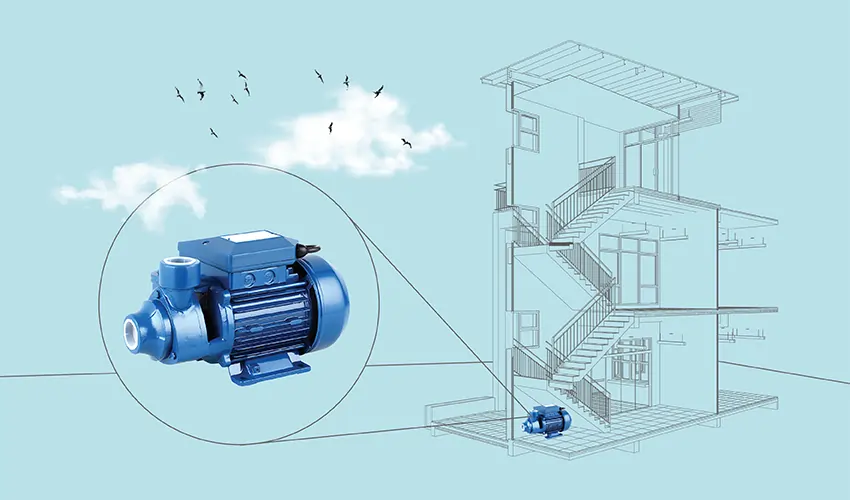Difference between jet pump vs well pump In the realm of water pumping solutions, the choice between jet pumps and well pumps hinges on critical differences. From installation locations to efficiency and maintenance, understanding these distinctions is essential for making informed decisions tailored to specific well conditions and requirements.
What is a jet pump?
A jet pump is a type of pump that is used to move liquids, typically water, from one location to another. Jet pumps are commonly used in residential, agricultural, and industrial applications. They operate on the principle of fluid dynamics and utilize the Venturi effect to create suction. Here’s a basic explanation of how a jet pump works:
1. Suction Process: A jet pump typically consists of two main parts – a nozzle and a venturi tube. The pump is installed above ground level, and a suction pipe extends into the water source (such as a well or a reservoir). As water flows through the nozzle, it accelerates, creating a low-pressure area.
2. Venturi Effect: The accelerated water then enters the venturi tube, which has a larger diameter than the nozzle. According to the Venturi effect, as the water velocity increases, its pressure decreases. This creates a suction force that draws additional water from the source into the system.
3. Mixing: The high-speed water from the nozzle and the additional water drawn in from the source mix together in the venturi tube.
4. Discharge: The mixed water is then forced into a discharge pipe, where it is pressurized. This pressurized water is then delivered to its intended destination, such as a house, field, or industrial process. Jet pumps are known for their simplicity and ease of installation. They are often used in situations where the water source is relatively shallow, making them suitable for applications like domestic water supply, irrigation, and other similar purposes. Additionally, jet pumps can be used in combination with pressure tanks to provide a steady and consistent flow of water.
What is a well pump?
A well pump is a type of pump specifically designed to extract water from underground wells. Wells are drilled or dug to access aquifers or water tables beneath the Earth’s surface. Well pumps play a crucial role in bringing this groundwater to the surface for various uses, including residential water supply, agricultural irrigation, and industrial processes. There are different types of well pumps, and their selection depends on factors such as the depth of the well, the water table level, and the intended use. Here are two common types of well pumps:
1. Submersible Well Pump:
- Placement: Submersible well pumps are located underwater in the well itself. They are submerged in the water, typically below the water level, which helps cool the pump during operation.
- Design: These pumps consist of a hermetically sealed motor and pump unit. The motor is placed at the bottom of the pump, and both are enclosed in a waterproof casing.
- Operation: When the pump is activated, it draws water into the unit and then pumps it to the surface. Submersible pumps are efficient and are often used in deeper wells.
2. Jet Well Pump
- Placement: Jet pumps are typically installed above ground, and a suction pipe extends down into the well. They are more common in shallower wells.
- Design: Jet pumps use a combination of a centrifugal pump and a jet assembly to create suction and lift water from the well.
- Operation: The jet assembly includes a nozzle and a venturi tube. As water passes through the nozzle, it accelerates, creating a low-pressure area that draws additional water from the well. This mixed water is then pumped to the surface.
The choice between a submersible well pump and a jet well pump depends on factors such as well depth, water table level, and the specific requirements of the water system. Submersible pumps are generally more efficient and quieter, but they may be more expensive and require professional installation. Jet pumps are simpler and more cost-effective for shallower wells but are generally less efficient.
What are the Differences Between A Jet Pump and A Well Pump
Jet pumps and well pumps are both used for pumping water, but they have different mechanisms and applications.
Here are the key differences between jet pumps vs well pumps:
1. Operating Principle
- Jet Pump: Jet pumps operate using a combination of suction and pressure. They use a jet of high-speed water or air to create a partial vacuum, which draws water from the well. The pump then pressurizes the water and delivers it to the plumbing system.
- Well Pump: The term “well pump” is more general and can refer to various types of pumps used in wells. Submersible pumps are commonly used for deep wells, and they are placed underwater, directly in the well. These pumps push water to the surface.
2. Installation Location
- Jet Pump: Jet pumps are typically installed above ground, often in a basement or pump house. They require a separate suction pipe (shallow well jet pumps) or two pipes (deep well jet pumps) reaching down into the well.
- Well Pump: Well pumps include submersible pumps, which are installed directly in the well, and above-ground pumps that may be installed near the wellhead.
3. Depth of Well
- Jet Pump: Jet pumps are commonly used for shallow wells. Shallow well jet pumps can draw water from wells with a depth of up to 25 feet, while deep well jet pumps can handle depths of up to 200 feet.
- Well Pump: Submersible well pumps are suitable for deeper wells and can reach depths of several hundred feet.
4. Efficiency
- Jet Pump: Jet pumps are generally less efficient than submersible well pumps. They may require more energy to lift water from the well to the surface.
- Well Pump: Submersible well pumps are often more energy-efficient because they are submerged in water, which helps in cooling the motor and reducing energy consumption.
5. Maintenance
- Jet Pump: Jet pumps may require more maintenance, as they have more components that are exposed to air and potential debris.
- Well Pump: Submersible well pumps are typically low-maintenance since they are protected from the elements.
6. Noise
- Jet Pump: Jet pumps can be noisy, especially the above-ground varieties, as they operate with air or water pressure.
- Well Pump: Submersible well pumps are generally quieter because they are submerged in water, which dampens the sound.
The choice between a jet pump and a well pump depends on factors such as well depth, water requirements, and installation preferences. Submersible well pumps are commonly used for deeper wells, while jet pumps are suitable for shallower wells.
Conclusion
In conclusion, jet pumps and well pumps are distinct in their operating principles, installation locations, depth capabilities, efficiency, maintenance requirements, and noise levels. Jet pumps utilize a combination of suction and pressure for shallow wells, with installations above ground, while well pumps encompass various types, including submersible pumps suitable for deeper wells, and are often submerged for greater efficiency and reduced noise.


